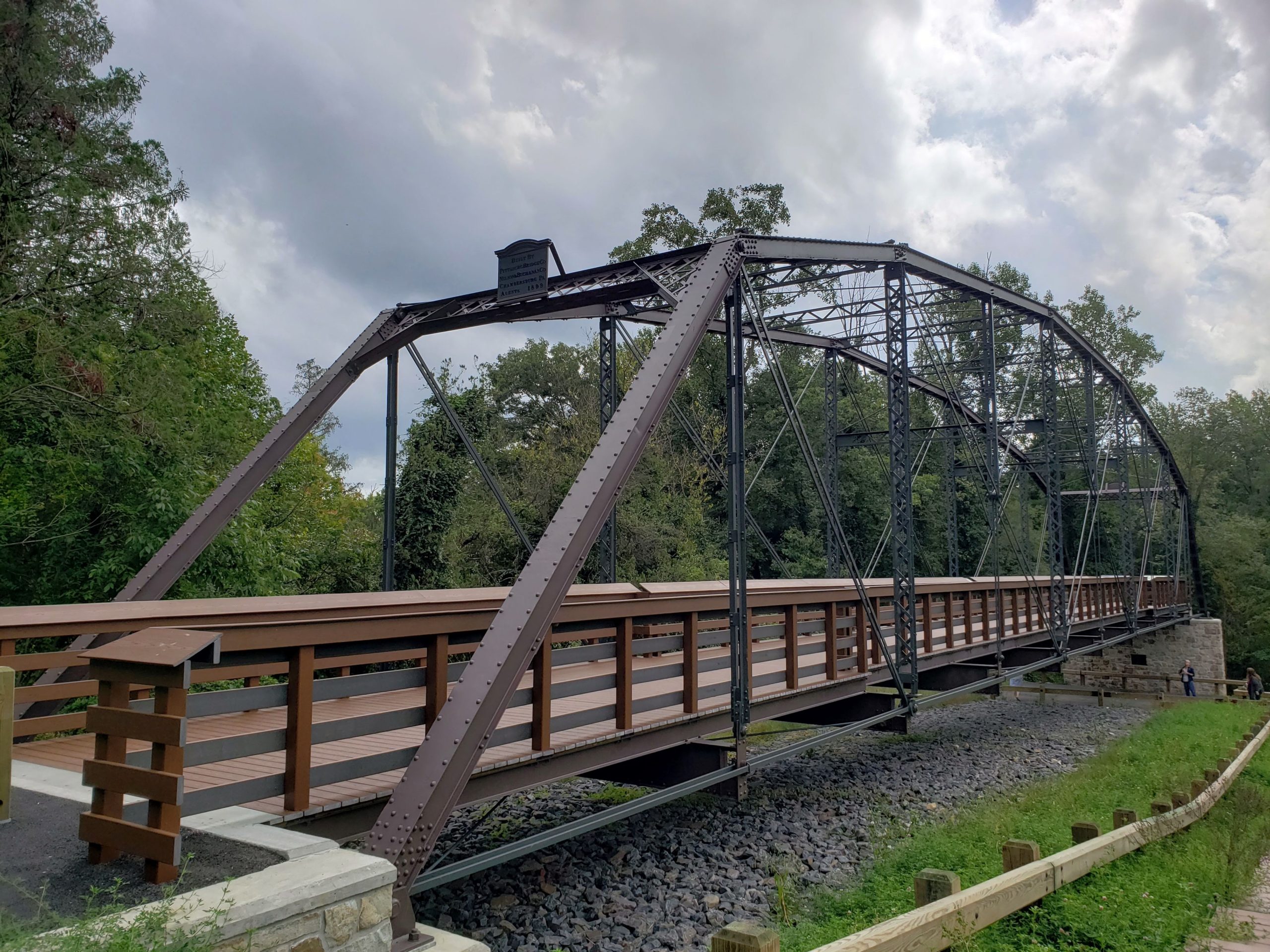There are 14 new National Register listings to share with you from the first half of 2022. They include an interesting range of institutional, ecclesiastical, commercial, educational, and industrial properties in 8 counties.
Continue readingCategory: National Register of Historic Places (Page 6 of 23)
In a given year, PA SHPO consults with federal agencies, applicants, and preservation stakeholders on thousands of federal undertakings in accordance with Section 106 of the National Historic Preservation Act. For some context, PA SHPO staff reviewed over 5,100 federal and state projects in 2021.
Continue reading
The Archaeology of a Village Blacksmith Shop
In 1823, a blacksmith named John W. Miller moved into what is now southeastern Blair County with his wife, Mary, and their three-year-old son, James. In their first years there they built their house and a small blacksmith shop along an existing road between Bedford and Rebecca Furnace. They didn’t have neighbors in those early years, but that wouldn’t last long.
Continue reading
PA SHPO’s Inaugural Historic Property Inspection Site Visit
Not long ago, PA SHPO announced a new program, the Historic Property Inspection Program to improve communication with between the property owners of some of Pennsylvania’s most significant historic treasures under preservation covenant with our office.
Continue readingWe conclude our Preservation Month celebration of the 2021 Community Initiative Award winners in the Diamond City.
Continue readingPA SHPO’s Guidelines for Recording Buildings in Pennsylvania, and a companion worksheet, Worksheet for Recording Buildings in Pennsylvania, are published to the PHMC website and ready for use.
These guidelines replace the PA SHPO’s How to Complete the Pennsylvania Historic Resource Survey Form guidance from November 2014. The Historic Resource Survey Form, or HRSF, was retired in February 2021. Information about older and historic places, including buildings, landscapes, archaeological sites, and bridges, is now submitted to the PA SHPO through PA-SHARE. While PA SHPO no longer uses the HRSF, the same information is collected through PA-SHARE.
You can find the Guidelines and Worksheet in the Above Ground Resources and National Register sections of PHMC’s Forms and Guidance webpage and on the Survey Contact and Guidance page:
- Guidelines for Recording Buildings in Pennsylvania: https://www.phmc.pa.gov/Preservation/About/Documents/Guidelines%20for%20Recording%20Buildings%20in%20Pennsylvania.pdf.
- Worksheet for Recording Buildings in Pennsylvania: https://www.phmc.pa.gov/Preservation/About/Documents/Worksheet%20for%20Recording%20Buildings%20in%20Pennsylvania.pdf. This is the same worksheet that is included in the Guidelines, just available on its own as a separate fillable PDF for users. Do not submit the worksheet to PA SHPO in place of completing the PA-SHARE online form. The worksheet is intended to be a tool to assist users in the collection of information for buildings and using PA-SHARE. Resources must be submitted through PA-SHARE.
Please note: These guidelines do not include the technical guidance for entering information about above ground buildings in PA-SHARE. For step-by-step instructions on how to access and use PA-SHARE, please refer to PA SHPO’s tutorial, Adding Above Ground Resources to PA-SHARE.
What better time of year than National Historic Preservation Month to announce the latest round of PA SHPO’s Community Initiative Award winners. This year’s projects and recipients showcase a range of preservation success stories, demonstrating the power of perseverance, collaboration and partnership.
Continue reading
Bridge Preservation and Education: A Site Visit to the Inwood Iron Bridge
In 2019, the historic Inwood Iron Bridge in Union Township, Lebanon County was disassembled for relocation.
Continue readingAre you a highly skilled historic preservationist with National Register experience?
The Pennsylvania State Historic Preservation Office (PA SHPO) is seeking an Historic Preservation Supervisor to coordinate the office’s National Register of Historic Places program.
Continue readingAre you a preservation-minded Pennsylvanian interested in sharing your time and talent? Do you know someone looking for an opportunity to be a leader and make a difference? Then we want to hear from you!
The Pennsylvania State Historic Preservation Office (PA SHPO) is seeking letters of interest and resumes from potential Board candidates.
Continue reading





Recent Comments